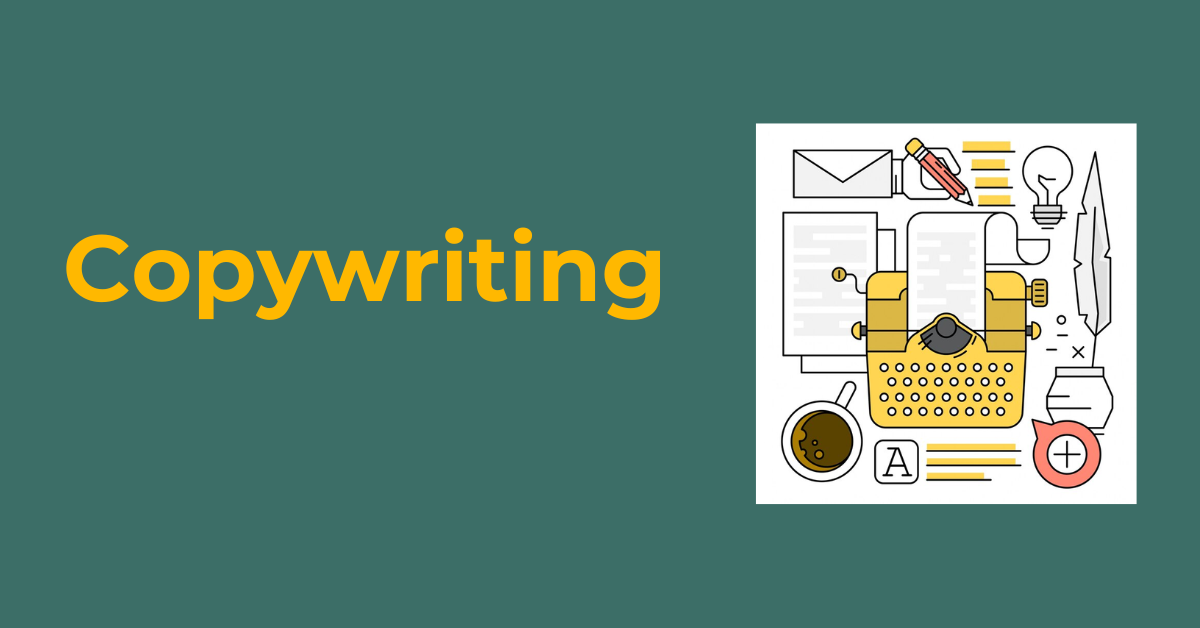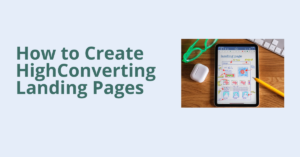Copywriting is the art of using persuasive language to captivate an audience and drive them to take action. Whether it’s to make a purchase, subscribe to a newsletter, or simply learn more, effective copywriting is the foundation of successful marketing and advertising. From the words on a website to email marketing campaigns and social media ads, copywriting plays a crucial role in every customer interaction and can greatly influence brand perception.
In this blog, we’ll dive into the importance of copywriting, explore its different types, and provide actionable tips to help you master this art.
What is Copywriting?
Copywriting is the process of crafting written content—often referred to as “copy”—that aims to inform, engage, and ultimately persuade the reader to take a specific action. Unlike content writing, which is usually more informative and educational, copywriting has a clear focus on driving conversion and achieving business objectives. This could range from generating leads and increasing sales to building brand awareness and engaging customers.
Why is Copywriting Important?
1. Increases Conversion Rates;
Well-crafted copy can turn visitors into leads and leads into customers. By addressing the reader’s needs and guiding them toward a solution, copywriting helps to improve conversion rates.
2. Enhances Brand Image;
Copywriting shapes how a brand communicates with its audience. Consistent, well-aligned messaging strengthens brand identity and makes a business more recognizable and trustworthy.
3. Engages Your Audience;
Good copy captures attention and keeps readers engaged. Whether it’s a compelling headline, a witty tagline, or an emotionally resonant story, engaging copy ensures your message stands out in a crowded market.
4. Supports SEO Goals;
Copywriting plays a significant role in SEO, helping to attract organic traffic by targeting relevant keywords. Optimized copy not only ranks better on search engines but also retains visitors by providing a positive experience.
5. Drives Emotional Connection;
People make purchasing decisions based on emotions. Great copy resonates with the audience, addresses their pain points, and builds trust, making readers more likely to take action.
Types of Copywriting;
1. Sales Copywriting;
This is the most direct form of copywriting focused on making sales. It’s often found in product descriptions, landing pages, and sales emails. Sales copywriting is persuasive and typically emphasizes benefits over features.
2. SEO Copywriting;
SEO copywriting combines keyword research with engaging content. The goal is to create content that ranks well on search engines while providing value to the reader. SEO copy is found in blogs, landing pages, and website content.
3. Email Copywriting;
Emails are a direct line to your audience, and email copywriting is essential for nurturing leads and retaining customers. Whether it’s for newsletters, promotional emails, or drip campaigns, email copy needs to be concise, relevant, and persuasive.
4. Social Media Copywriting;
Social media copy is tailored to platforms like Facebook, Instagram, and Twitter. It’s often short, punchy, and engaging to capture attention in fast-paced social feeds. Social media copy is used in captions, ads, and organic posts.
5. Brand Copywriting;
Brand copywriting focuses on building brand identity and creating a voice that resonates with the target audience. It includes taglines, slogans, and overarching brand messaging used across various channels.
6. Advertising Copywriting;
Advertising copy is crafted to drive immediate action, whether it’s a click on an ad or a purchase. This copy is typically found in paid ads on Google, social media, and traditional advertising formats like print and TV.
Essential Elements of Effective Copywriting;
1. A Compelling Headline;
The headline is the first thing a reader sees, and it should grab attention immediately. A strong headline is clear, benefits-driven, and evokes curiosity, making the reader want to learn more.
2. Clear Value Proposition;
A value proposition explains what makes your product or service unique and why it’s valuable to the reader. It should answer the question, “What’s in it for me?”
3. Emotional Appeal;
Connecting emotionally with your audience is a powerful way to influence their decisions. Use language that resonates with their desires, fears, or pain points to create a stronger connection.
4. Benefits Over Features;
While it’s essential to describe what your product does, focusing on how it benefits the user is more persuasive. Benefits show the reader how your product or service improves their life.
5. A Clear Call to Action (CTA);
Every piece of copy should guide the reader toward a specific action. Use action-oriented language like “Buy Now,” “Learn More,” or “Sign Up Today” to make it clear what the next step is.
6. Social Proof;
Testimonials, case studies, and endorsements from other customers can increase credibility. Social proof builds trust and assures the reader that others have benefited from your product or service.
7. Simplicity and Clarity; Effective copywriting is simple and to the point. Avoid jargon and complex language; instead, use words that are easy to understand and relate to.
Tips for Mastering Copywriting;
1. Understand Your Audience;
Knowing your audience is fundamental. What are their pain points, desires, and objections? Tailor your language, tone, and messaging to resonate with your target demographic.
2. Focus on Benefits;
Readers care more about how your product benefits them than about the technical features. Translate features into tangible benefits that answer “What’s in it for me?”
3. Use Persuasive Language;
Power words like “imagine,” “discover,” “free,” “proven,” and “guaranteed” can boost engagement. Be mindful not to overuse them, as authenticity is essential.
4. Create Urgency and Scarcity;
Urgency encourages immediate action by tapping into the reader’s fear of missing out (FOMO). Phrases like “Limited time only” or “Only a few spots left” can drive faster conversions.
5. Optimize for Mobile;
With more users consuming content on mobile devices, ensure your copy is short, concise, and easy to read on smaller screens.
6. A/B Test Your Copy; Experiment with different headlines, CTAs, and messaging to find what resonates best with your audience. A/B testing allows you to refine your approach based on real data.
7. Keep the Reader in Mind;
Copywriting should be about the reader, not about the brand. Use “you” instead of “we” to make your message more personal and relatable.
8. Edit and Refine;
The best copy often comes from multiple drafts. Edit ruthlessly, removing fluff and ensuring every word has a purpose.
Common Copywriting Mistakes to Avoid;
1. Being Too Salesy;
While the goal is to sell, being overly promotional can be off-putting. Balance persuasive language with a genuine, helpful tone.
2. Ignoring SEO;
SEO is essential for copy that lives on the web. Incorporate relevant keywords naturally to help your content rank and attract organic traffic.
3. Using Complex Language;
Avoid jargon or overly technical terms unless your audience specifically expects it. Clear, simple language is more effective.
4. Lacking a Clear CTA;
Even well-written copy is ineffective if the reader doesn’t know what to do next. Make your CTA clear and action-oriented.
5. Not Testing;
Assuming your copy will work without testing can lead to missed opportunities. A/B test your copy elements to find the best-performing versions.
Conclusion;
Copywriting is both an art and a science, requiring creativity, empathy, and an understanding of human psychology. Mastering copywriting can elevate your digital marketing efforts, helping you attract, engage, and convert your target audience more effectively.
By focusing on benefits, creating clear and compelling CTAs, and crafting a message that resonates with your audience, you can write copy that not only communicates your brand’s value but also drives action. As you continue to refine your copywriting skills, remember that testing and understanding your audience will always be at the heart of successful copy.




